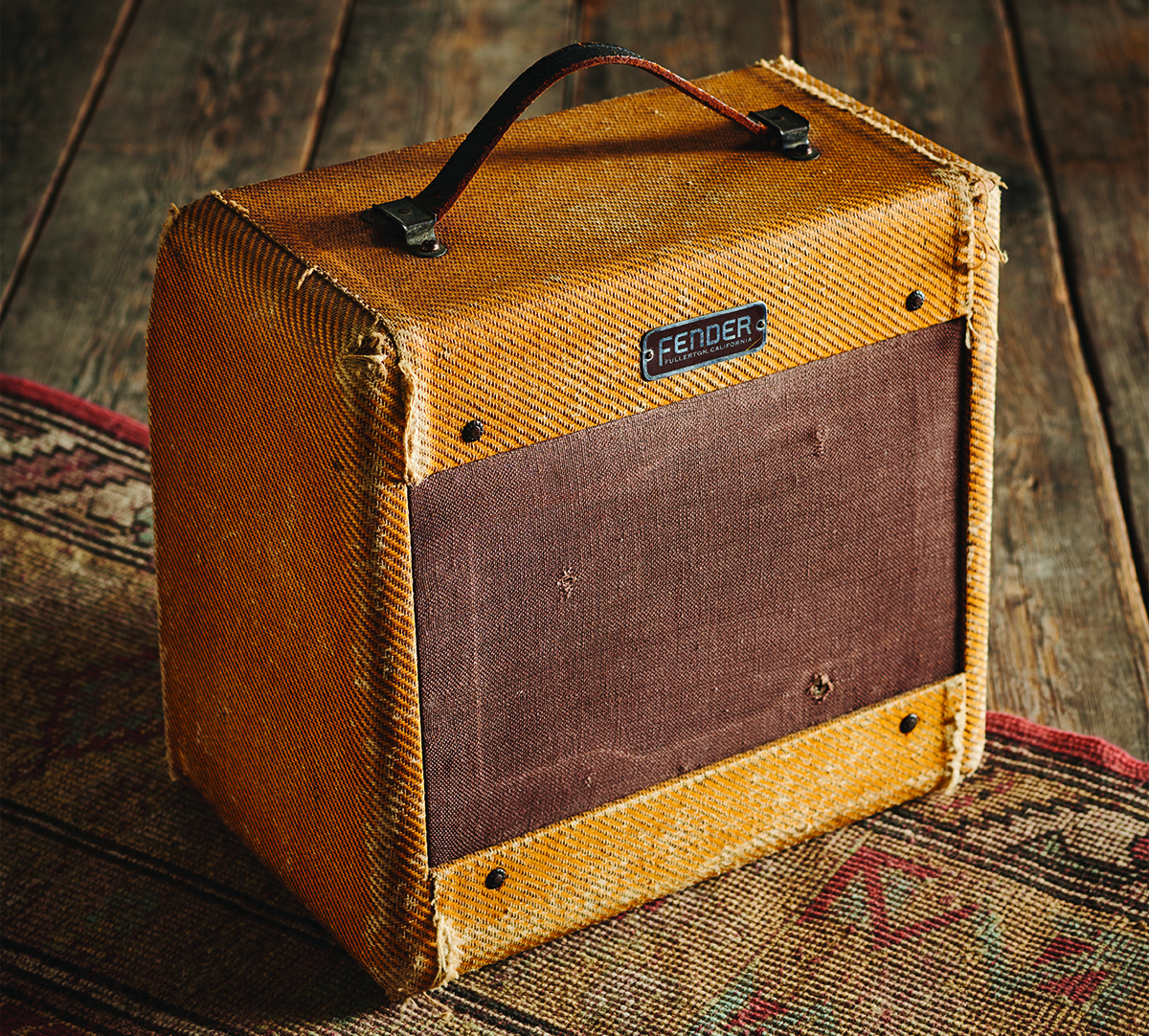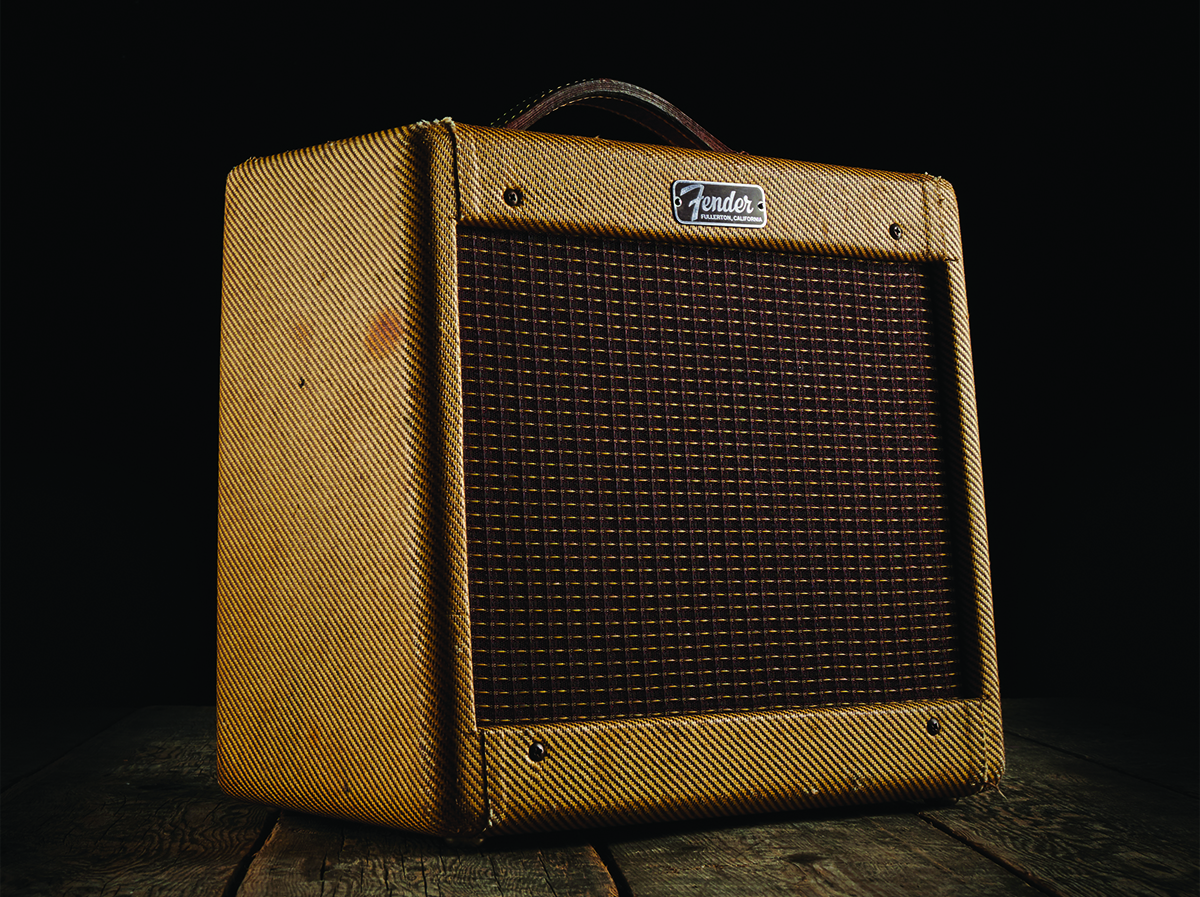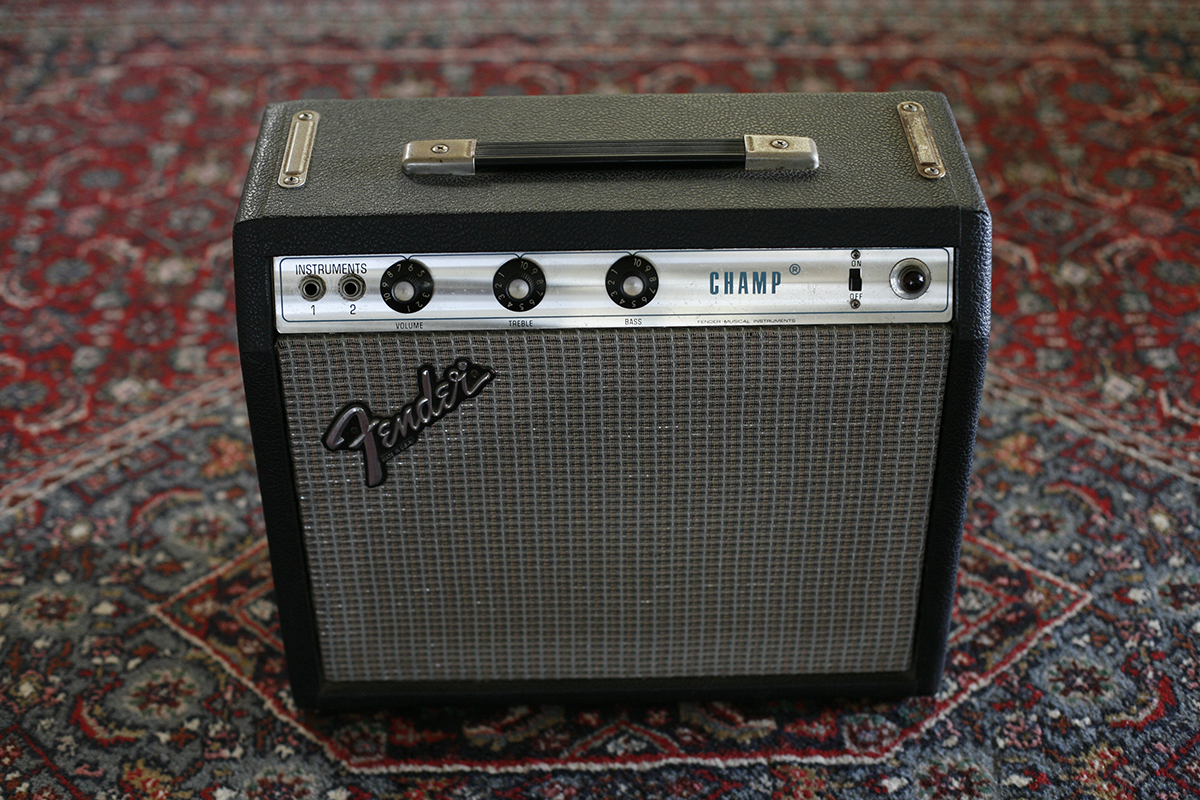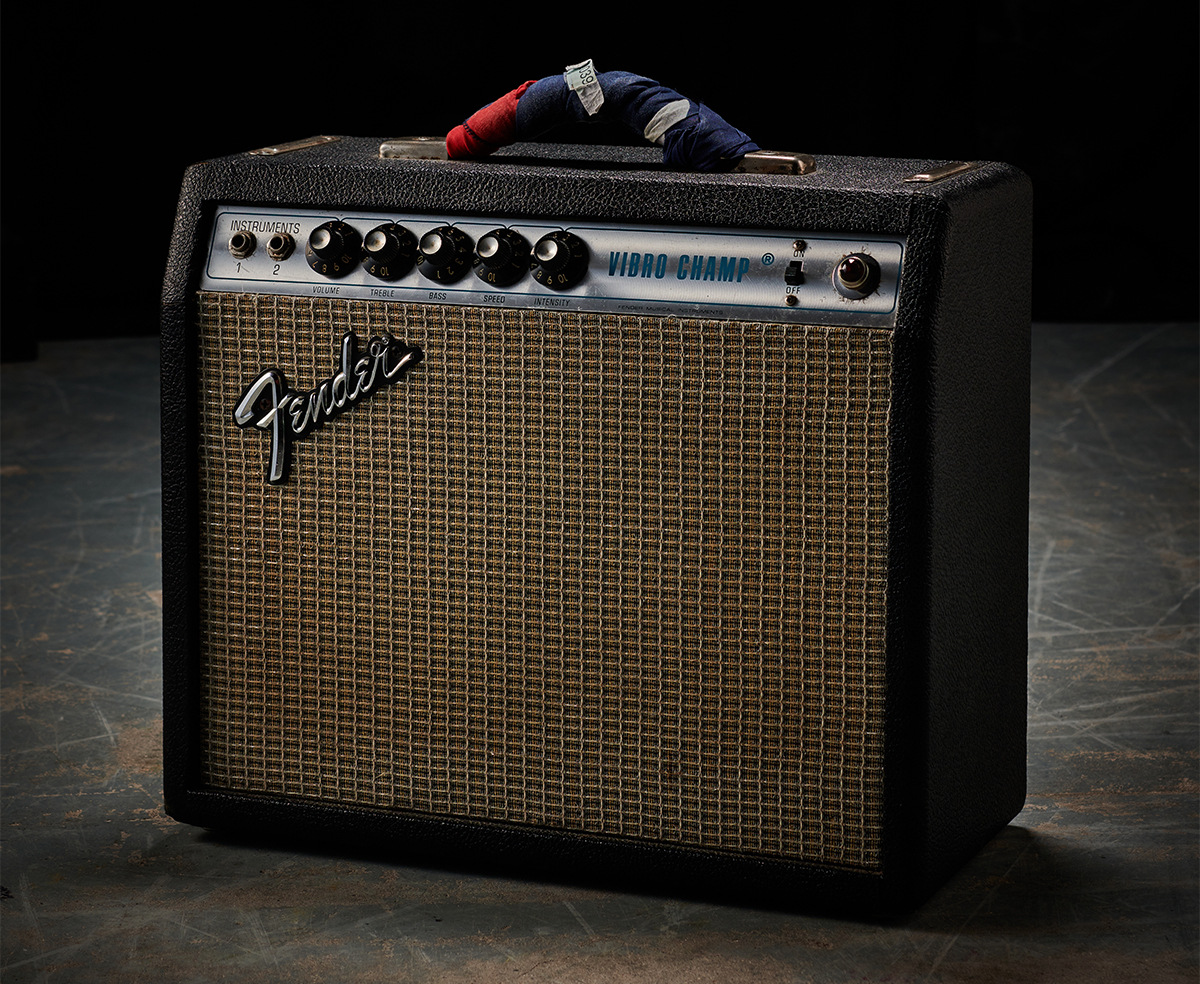How is it that a tiny guitar amp with origins that date back 76 years is still considered a monster tone machine today? It’s because Fender got so much right with the humble Champ combo from the start, with “simplicity” as the watchword both then and now.
Founded in 1946, Fender debuted its amp lineup that same year with the Princeton, Deluxe and Professional models. In 1948, the company introduced a “beginner” set that paired a Hawaiian lap-steel guitar with an amp designed to sit a rung lower than that initial trio. It was dubbed the Champion 800, a name that was soon after shortened to Champ. Some version of the diminutive combo has remained in Fender’s catalog ever since, although the narrow-panel tweed model of the mid ’50s to early ’60s is arguably the most revered of them all.
The original Champion 800 had a blonde TV-front livery and delivered four watts through a single eight-inch speaker, with a volume knob as its sole control. One year later, Fender replaced it with the Champion 600, an even smaller combo that combined the same circuit with a six-inch speaker. Fender revised the design in 1949 with a two-tone covering and a slanted, rear-mounted control panel that remained until ’55, differentiating the two Champion models from the flat, top-rear mounted panels found in the rest of Fender’s lineup.

In ’53 the Champion moved into Fender’s “wide-panel” tweed cabinet of the era, so-called for its wider upper and lower mounting panels and full-width baffle. Two years later, it began evolving toward its most iconic form: the narrow-panel 5F1 tweed combo, with an upper rear-mounted control panel and a look that matched the rest of the range. Initially, the wee ’55 model — now simply called the Champ — retained the six-inch speaker, but in ’56 it gained an eight-inch Alnico Jensen and a slightly larger cab, which maximized this small amp’s volume, such as it was.
Fender never intended the Champ as a tool for professional players, and certainly the model has never been able to keep up with any but the very lightest-hitting of drummers onstage. Nevertheless, countless pro guitarists have discovered through the years that the amp’s restricted volume means absolutely nothing once you put a studio mic in front of it, and some have taken the same principle to live performances.
When used as such, the amp’s diminutive output can be co-opted to great advantage in creative tone sculpting: Rein in the Champ’s volume control for crisp clean tones and make the signal whatever you want at the mixing desk, or crank it up for juicy, tactile overdrive without blowing the rafters off the joint or destroying an expensive studio mic.

As many noteworthy electric guitar pros have discovered, the simplicity of the Champ’s design allows a voice and playing feel that are difficult for many larger amps to capture. The circuit employs a mere three tubes — one 12AX7 preamp, one 6V6GT output and one 5Y3 rectifier — each of which performs an entirely different job.
Furthermore, there’s nothing between the input and the output transformer besides a mere two coupling capacitors, a single potentiometer and one resistor (the standard 68k-ohm grid stopper that follows the input jack on all Fender designs). That’s not a lot coming between your guitar signal and the sound that emanates from the speaker, all in a totally hand-wired circuit using the revered components of the day. This minimal path contributes mightily to the Champ’s legendary sonic veracity and touch sensitivity.
Even the use of just a single tube in the output stage, what’s called a single-ended design, adds considerable character to the tonal brew. Without a partner to couple it in a push-pull Class AB amplification circuit, the lone 6V6GT does all the work itself in what is considered a true Class A output stage. As such, the Champ provides a rare example of a term that is often mistakenly applied to many two- and four-tube designs that don’t truly fit the definition. The result can sometimes be heard as a smoother onset of distortion and richer harmonic content when the Champ gets there.

As for street cred, myriad guitar heroes have plied their trade in the studio through the little Champ. Eric Clapton famously used a tweed Champ on several songs, including, reportedly, “Layla.” Keith Richards, Billy Gibbons and Jeff Beck frequently turned to the Champ, and Joe Walsh used a tweed model on “Rocky Mountain Way” and several other noteworthy tracks. Beatle George Harrison is said to have preferred his Champ for slide parts, and in more recent years acclaimed jazz guitarist Julian Lage has used a tweed Champ in the studio as well as onstage.
Tiny though they are, original vintage tweed Champs have astronomically escalated in price in recent years. If the real thing is beyond your means, Fender currently offers the ’57 Custom Champ in the Handwired Series, and in 2011 introduced the EC Vibro Champ in its Eric Clapton Signature Series, essentially a Champ with added tube tremolo (now discontinued).
As the rest of the Fender lineup evolved into brown-panel cosmetics in ’61 and the iconic blackface styling partway through ’63, the Champ remained the last of the tweed-era amps for a few years longer. It retained the same cabinet build until a good way into ’64 and kept its tweed covering longer than any other model, although it was covered in black Tolex over a narrow-panel ’50s-style cab starting in 1963, prior to fully joining the blackface lineup in fall 1964.

GIPHY App Key not set. Please check settings